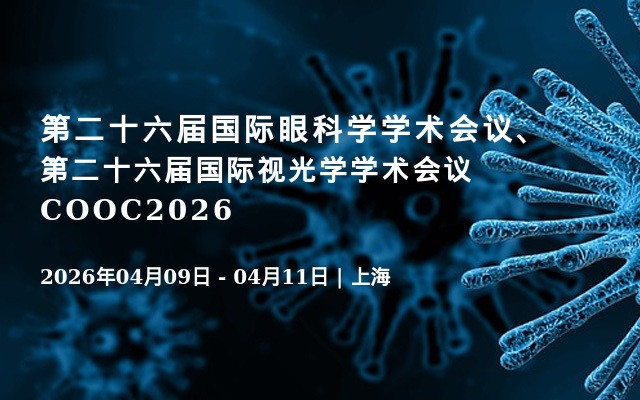
- 我要咨询
- 会议通知
- 会议日程
- 会议嘉宾
- 会议门票
-
手机下单


|
2016人源化实验动物模型国际论坛 已截止报名
会议时间: 2016-09-21 08:00至 2016-09-24 18:00结束 会议地点: 南京 南京明发珍珠泉大酒店 浦口区珍珠街178-1号 周边酒店预订 |
 会议通知
会议通知
实验动物疾病模型,对于研究人类疾病发生的病因、发病机制,开发防治技术和药 物,是不可缺少的研究工具。随着基因工程技术的飞跃发展,实验动物模型已经从单纯在实验动物身上用药物或者手术诱发某种疾病,发展到在实验动物体内引入人 源的细胞和组织,成为人源化实验动物模型,为目前基础医学研究的发展及其成果迅速转化为临床上新的治疗方法或手段,提供了重要工具。人源化实验动物的出现,是一个具有划时代意义的科学进步。
人肝炎病毒感染疾病一直缺乏理想的实验动物模型,原因是人肝炎病毒极少感染人以外的肝脏细胞;艾滋病也一直缺乏理想的实验动物模型,原因是人艾滋病 病毒极少感染人以外的血液T细胞。通过移植人的肝脏细胞、血液细胞到免疫缺陷实验小鼠体内,构建人源化的肝脏、免疫细胞及免疫系统,让实验小鼠携带人的肝 细胞、人T细胞,再让人肝炎病毒感染和艾滋病感染、疟疾感染,从而建立良好的病原体感染实验动物模型,为研究抗人肝炎病毒、艾滋病和疟疾的药物和疫苗研究 铺平了研究道路。肝脏人源化小鼠还为药物的毒理研究提供了非常重要的研究工具,因为传统上,进入I 期临床试验的新药,都是在健康志愿者身上进行实验,让这些健康志愿者承受了很大的毒性风险,有违临床实验的伦理信念。人源化肝脏实验动物的出现,将使得新 药研究中的毒理试验,得以在实验小鼠体内进行试验,使得药物针对人体代谢和毒理特征的研究,变得更加安全、方便、高效。
人源化实验动物疾病动物模型,也成为转化医学和精准医学研究与实施中非常重要甚至是不可或缺的平台和工具。例如现在最热的抗癌免疫细胞学疗法,在传 统的实验动物和免疫缺陷动物上,因为缺乏人免疫系统的存在,针对某特定患者的癌细胞/组织所开发的免疫细胞治疗,就缺乏可靠的临床前疗效检验性治疗评价。 人源化实验动物,因为可以在实验动物体内同时建立某特定患者的癌细胞/组织和人免疫系统,因而可以对一项细胞免疫治疗的疗效,进行合理有效的临床前评价。
人源化动物模型,对自身免疫性疾病和器官移植研究等方面,也是非常重要的研究工具,可以更好地阐明免疫疾病、免疫排斥等发病机制及临床前应用的研究。由于其对生物医学各方面将产生革命性的广阔及深远的影响,在市场开发上,也具有巨大的商业价值,因此成为目前国际生命科学研究中最令人瞩目的领域之 一。
会议专题
本次会议邀请来自世界著名科研院所、知名药企、具有生命科学研究广泛影响力的高校科学家,开展为期两天的“人源化实验动物模型“专题研讨,以促进国际间的 技术合作与交流,为推进人源化动物在国内精准医学研究与产业应用方向的发展做出贡献。

肿瘤专题

John Bial
President and Chief Executive Officer
Yecuris Corporation
Presentation Title:
Humanized Animal Models: Novel Tools for Discovery Research
Abstract:
Animal models xenografted with human primary cells or genetically modified to constitutively express human proteins have been utilized in the fields of drug metabolism, toxicology, infectious disease, and gene therapy. In the field of liver biology, primary cell xenografts have been successfully and reproducibly generating models with better than 95% hepatic replacement, yielding models that have a broad range of utility that are able to provide data that more closely resemble what we would expect to see in the clinic.
The FRG® KO mouse model has been widely utilized in these applications - in this talk, we will explore the mechanism of these models as well as their uses and limitation

Neal Goodwin , Ph.D.
Vice President
Corporate Research Development
Champions Oncology, Inc.
Presentation Title:
Humanized Mouse Systems for Oncology Clinical Advancement
Abstract:
The development of IL2 receptor gamma chain null (IL-2Rγnull) mice; examples of which include NOG, NSG, and MISTRG; has led to the implementation of human immune system (HIS) and human AML leukemic stem (LS) cell humanized pharmacology systems for use in oncology therapeutic development. Advanced variants of IL-2Rγnull mice with human transgenic GMCSF and IL3 have allowed for HIS mice to be created that have activated cells of myeloid lineage such as dendritic cells and macrophages. HIS mice co-engrafted with patient derived xenografts (PDX) conceptually provide for an excellent system for elucidating efficacy and mechanism of action for immune checkpoint inhibitors and for determining immune checkpoint inhibitor synergy with standard of care agents. A drawback to HIS modeling is that the source of hematopoietic stem cells required for creating HIS mice is never a HLA match to the PDX tumor model being tested. Feasibly, only by creating autologous pluripotent hematopoietic stem cell lines that match each PDX tumor or the use of autologous hematopoietic stem cells can allow for HIS-PDX mice screens that closely resemble the natural human immune system. Approaches for the co-clinical use of HIS and LS mouse systems for co-clinical modeling and pilot data from these efforts will be presented.

Gavin Thurston , Ph.D.
Vice President of Regeneron Pharmaceuticals
Presentation Title:
Genetically engineered mouse models to test human cancer immunotherapies
Abstract:
In vivo tumor models are essential to test the anti-tumor activity and side-effect profile of novel immunotherapeutics. However, antibody-based therapies often do not cross react with the corresponding murine target, making it difficult to develop relevant preclinical tumor models. We have utilized Regeneron’s capabilities in genetic engineering of mice to develop several different types of mouse tumor models with relevant immune cell targets, and have used these models for preclinical testing of both checkpoint inhibiting antibodies and T cell engaging bispecific antibodies.

An Tang , Ph.D.
Project Manager, PDX platform, NBRI
Presentation Title:
Applications of NCG mice in Translational Cancer Research
Abstract:
Most of the oncology compounds entering clinical trials failed to demonstrate sufficient safety or efficacy. Hence, better preclinical evaluating systems which could represent the complexity of human cancer are needed. The patient-derived xenograft (PDX) models are increasingly used in translational cancer research and have become the most realistic model for preclinical studies. By using the immunodeficient NCG (NOD-Prkdcem26Il2rgem26Nju) mice, NBRI has established a collection of PDX models covering gastric, colorectal, pancreatic, cervical and ovarian cancer and a collection of CDX models covering scores of cancer cell lines. We are establishing an Oncology platform, together with the Phenotyping platform and Pathology platform, to facilitate translational cancer studies and provide services in oncology drug screening, biomarker development and personalized medicine strategy evaluation.
免疫专题

Zhigang Tian , Ph.D.
Institute of Immunology
School of Life Sciences and Medical Center
The Key Laboratory of Innate Immunity and Chronic Disease(Chinese Academy ofSciences)
University of Science and Technology of China
Presentation Title:
Human NK Cell Development in Humanized Mice
Abstract:
Natural killer (NK) cells are important effector lymphocytes of innate immune system and distributed in various organs, such as the liver, lung, spleen and lymph nodes. They have been shown to play critical roles in defending against virus and tumors. Although NK cells are conserved in several species, many differences exist between human and mice. The study of NK cells in vivo is largely restricted to mice, the knowledge of which cannot be fully used in human NK cell biology. Humanized mice provide a powerful animal model for dynamically studying the reconstitution, development and function of human NK cells in vivo. Several humanized mice models have been constructed, but the development, maintenance and function of human NK cells are limited if compared with B- and T-lymphocytes. Because there are discrepancies between human and mice cytokines, various strategies have been used to supply different human cytokines in the humanized mice for improving human NK cells reconstitution. By these methods, the level of reconstitution, terminal differentiation and function of human NK cells are increased remarkably. A humanized mice model with fully functional NK cells will be useful for investigating the biological and pathological functions of human NK cells in vivo.

Zheng Hu , Ph.D.
Associate Professor
The Academy of Translational Medicine of First Bethune Hospital,
Jilin University
Presentation Title:
Humanized mice as a novel preclinical model for translational research
Abstract:
Small animal models with functional human lymphohematopoietic systems are highly valuable for the study of human immune function and human immune relevant diseases under physiological and pathological conditions. Over the last two decades, numerous efforts have been devoted towards the establishment of such humanized mouse models. Several years ago, we firstly developed a humanized mouse model with reconstitution of almost all lineages of human immune cells, including human T cells, human B cells, human myeloid and plasmocytoid dendritic cells, through co-transplantation of human CD34+ fetal liver cells (i.v.) and human fetal thymic tissues (under renal capsule) on immunodeficient mice, which also named as BLT mouse model. Moreover, human immune system in the humanized mice are functional as both antigen specific human T cell responses and antigen specific human T cell dependent antibody production were determined in these animals after immunization, making it widely used to study issues like HIV infection, allogeneic/xenogeneic rejection, autoimmune diseases, function analysis of antibodies target human immune cells and so on. Other than human lymphoid cells, high level of human red blood cells and human platelets could also be achieved in the optimized humanized mice. Thus it may also serve as a powerful platform to evaluate novel therapeutic regimens for human hematopoietic disorders and the diseases like malaria infection. This presentation is focus on the reconstitution of human lymphohematopoietic system in these humanized mice and the potential use of these animals in translational biomedical research.

Takeshi Takahashi , Ph.D.
Chief, Immunology Laboratory, Gene Manipulation Laboratory
Central Institute for Experimental Animals, Kawasaki, Japan
Presentation Title:
Generation of 2ndgeneration NOG mice and application to human immunology
Abstract:
NOD/scid/IL-2R cnullmouse (NOG), which was established in CIEA, has enabled long-term engraftment of human derived materials in mice. Transplantation of human hematopoietic stem cells (HSC) in NOG mice leads to stable reconstitution of human immune systems mainly consisted of B and T lymphocytes. CIEA has produced a series of 2ndgeneration NOG mice by introducing genetic modifications in order to improve the quasi-human immune systems. These include enhancement of multi-lineage hematopoiesis, induction of antigen specific immune responses, or recapitulation of some pathological aspects of human diseases. I would like to introduce some of the 2ndgeneration NOG mice and their immunological features. For example, expression of IL-2 or IL-15 favored the predominant differentiation of mature human NK cells. IL-3/GM-CSF or IL-6 transgenic (Tg) mice promoted the myeloid cell differentiation, which is otherwise ineffective in NOG mice. We have attempted to transplant human tumor cell lines into those humanized ‘next generation NOG mice’ to examine whether these mice become useful models for studying tumor immunology and also for developing clinical drugs. Our results demonstrated that human NK cells in IL-2 or IL-15 Tg mice could suppress the tumor growth either by graft versus leukemice (GVL) effect or by ADCC. In addition, a significant number of immature myeloid cells, which are phenotypically similar to MDSC or TAM, could be detected in IL-3/GM-CSF or IL-6 Tg mice, We would like to present our recent results and discuss about the future direction of next generation humanized mice.

Yan Li, Ph.D.
Institut Pasteur, France
Presentation Title:
Novel human immune system (HIS) mouse models for human antibody discovery and vaccine development
Abstract:
In the past 10 years, progress in the development of ‘humanized’ mice bearing human immune systems (HIS mice) has been significant. It is now possible to generate mice with robust, stable human hematopoiesis that includes not only multiple lymphocyte subsets but also diverse myeloid cell lineages. Nevertheless, eliciting antigenRspecific adaptive immunity, especially T cellRdependent highR affinity antibody responses in current HIS mice remains challenging.
To further optimize functionality of HIS mice, our laboratory has focused on improving three critical checkpoints required to mount efficient antibody responses. These include 1) intraRthymic and peripheral T cell selection on human HLA molecules; 2) peripheral T cell activation via human dendritic cells (DC); and 3) B cell R T cell interactions in the lymph node. The inherent limitations in previous HIS mouse models were individually corrected following specific genetic modifications to the basic Balb/c Rag2R/R γcR/R SirpRNOD (BRGS) model. Enhanced human T cell development and function, functional peripheral human DC subsets, and systemic lymph node development were achieved in a series of ‘second generation’ BRGS HIS mice that produced specific T cell response and antigen specific antibodies after immunization with model antigens. As a result, optimized BRGSRbased HIS mice offer an ideal model for human antibody discovery and vaccine development. These novel HIS mouse models can be exploited in partnership with the spinRoff company AXENIS (Paris, France) that specializes in HIS mouse technologies for the public and private sector.
肝脏专题

Hiroshi Suemizu , Ph.D.
Director, Biomedical Research Department
Central Institute for Experimental Animals
Presentation Title:
Development of advanced humanized liver model with new TK-NOG mice
Abstract:
To address interspecies difference issues, we developed animal models with reconstituted livers containing human hepatocytes (humanized-liver). This model (TK-NOG) was based on immunodeficient NOG mice that express the herpes simplex virus thymidine kinase type 1 gene (HSVtk) specifically in the liver by using an albumin gene artificial enhancer/promoter. The humanized-liver showed zonal position-specific enzyme expression and a global gene expression pattern representative of the mature human liver. However, TK-NOG mice have the following general disadvantages; 1) gender differences in transgene expression, 2) insufficient transgene expression levels at the time of weaning, and 3) male sterility. To overcome these disadvantages, we developed new TK-NOG mice that have transthyretin promoter driven HSVtk mutant clone 30 (TKmut30) transgene. We established three transgenic TK-NOG lines (NOG-TKmut30). Male NOG-TKmut30 transgenic mice in each line were fertile and reproduced normally, transmitting the transgene in expected Mendelian ratios. Male and female NOG-TKmut30 mice aged 5 weeks showed severe liver injury by ganciclovir injection. The new TK-NOG lines were also successfully engrafted with human hepatocytes as in traditional TK-NOG mice. However, it is still insufficient for complete humanized model; that is 1) affecting drug metabolizing enzyme activities by remaining mouse hepatocytes, 2) lacking inflammatory responses. In this presentation, I would like to introduce new platform of TK-NOG mice and our perspectives for immunocompromised “humanized model” especially in drug metabolism research and infectious disease research fields.

Feng Li, Ph.D.
University of North Carolina at Chapel Hill, USA
Presentation Title:
To improve human hepatocyte reportulation to 100% in a second generation mouse model.
Abstract:The repopulation of human hepatocytes is always incomplete when the balance of transplanted human hepatocytes and residual mouse hepatocyte functionally reaches in Fah Knockout mouse. To further increase the repopulation level of human hepatocytes, we produce a second generation of NRG-FAH-AFC9 mouse, which containing AFC9 transgene on top of Fah knockout. The AFC9 transgene mouse, containing a FKBP-Casp9 transgene specifically over-expressed in mouse liver, can functionally activate the apoptosis pathway in the presence of a chemical inducer, which facilitates the complete removal of mouse cells hepatocytes. The repopulation level of human hepatocytes can reach almost 100% in liver, efficiently supporting HBV, HCV infection. The high level of human hepatocytes in mice can be potentially used for drug development.

Ludi Zhang , Ph.D.
Institute of Biochemistry and Cell Biology (IBCB),
Shanghai Institutes for Biological Sciences (SIBS)
Presentation Title:
Generation of liver-humanized animals with induced human hepatocytes
Abstract:
Humanized animals with livers reconstituted of human hepatocytes are the ideal models to study human liver disease and drug development in vivo. However, the procurement of human hepatocytes is a major problem in producing liver-humanized animals because of the shortage of donor organs. Here, we generated human induced hepatocytes (hiHeps) from fibroblasts by lentiviral expression of FOXA3, HNF1A, and HNF4A. hiHeps express hepatic gene programs and display functions characteristic of mature hepatocytes. More importantly, upon transplantation into mice with fatal metabolic liver disease due to fumarylacetoacetate dehydrolase (Fah) deficiency, hiHep cells repopulated 4.2% of the liver parenchyma and recused mice, suggesting it can be applied as an alternative cell source for generating liver-humanized animals. Notably, it has been reported that hepatocyte proliferated more efficiently in rat livers than in mouse livers and extensively liver-humanized rats have not been reported yet. Therefore, we aimed to generate a novel rat model to improve the in vivo repopulation of hiHep cells. Using lately developed CRISPR/Cas9 technique, we generated Fah-/-Rag2-/-IL2rg-/- (FRG) rats. Transplantation of wild-type rat hepatocytes rescued FRG rats from the death via efficient liver repopulation. Furthermore, xenograft of human liver cancer cells and induced pluripotent stem cells in FRG rats demonstrated they could act as recipients for xenogeneic cells. Together, these data hold great promise for the establishment of donor independent liver-humanized rats.

Xijun Song , Ph.D.
Beijing Vitalstar Biotechnology Co., Ltd.
Presentation Title:
Applications of chimeric mouse with human immune system and liver in drug research and development
Abstract:
In the study, we have developed the highest immunodeficiency NPG(NOD‐Prkdcscid Il2rgnull) mouse which accept human tissue and cells very well. Hemopoietic stem cell isolated from human fetal liver and cord blood can reconstitute human immune system in NPG mouse for immune related drug research and development; PDX and CDX model can be generated by transplanted patient derived xenograft or tumor cell line, quickly and efficiently, providing in vivo model for new immune therapy against tumor. We also developed an inducible uPA mouse model on Rag2nullIl2rgnull background termed URG mice. Transplanted human liver cells reconstitute mouse liver up to 80%, supporting HBV, HCV infection for related drug in vivo test. The humanized URG mouse is also ideal model for drug metabolism and drug toxicity.
感染专题

Zhiwei Chen , Ph.D.
Director of AIDS Institute,
Professor of Department of Microbiology
LKS Faculty of Medicine of the University of Hong Kong
Presentation Title:
Role of humanised mice in HIV prevention and cure research
Abstract:
HIV-1 genetic diversity and the lack of a proper animal model are major obstacles to prevention and immunotherapy against HIV/AIDS. Here, we report the establishment of a humanised mouse model for HIV prevention and cure research. By testing both chronic and transmitted/founder HIV-1 strains, we demonstrate that infected human CD4+ T cells are found primarily in lymph tissues especially in mucosa-associated lymph tissues that mimics the situation of human infection. Taking one step forward, we use this model to investigate the efficacy of a broadly neutralizing antibody (bnAb). We show that a novel bi-specific bnAb (bi-bnAb) generated in our laboratory displays broadly neutralizing activities against all HIV-1 strains tested, including multiple co-circulating subtypes/recombinant forms, nine transmitted/founder viruses and viral strains naturally resistant to parental bnAbs. Critically, in the humanized mouse model, our bi-bnAb not only confers complete protection against diverse live pathogenic HIV-1 challenges but also eliminates productively and latently infected T cells after in vivo delivery of the bi-bnAb gene. Therefore, our findings demonstrate that the use of humanized mice to evaluate anti-HIV agents (e.g. bnAb) markedly enhances its potential for HIV-1 immunoprophylaxis and immunotherapy research, and sets the stage for using bi-bnAb to control the expanding epidemic with diverse HIV-1 subtypes.

Ramesh Akkina , Ph.D.
Department of Microbiology, Immunology and Pathology,
Colorado State University, Fort Collins, Colorado 80523, USA
Presentation Title:
Modeling HIV/AIDS prevention in humanized mice: PK-PD studies on anti-HIV drugs maraviroc, raltegravir and tenofovir
Abstract:
An attractive strategy for HIV prevention (Pre-Exposure Prophylaxis) is to utilize already clinically approved anti-retroviral drugs. However there is insufficient pharmacokinetic (PK) data on the optimal drug concentrations needed at the vaginal and rectal mucosal tissues to confer full protection. Here we derived PK-PD data on three leading drugs, the RT inhibitor tenofovir (TFV) and CCR5 inhibitor maraviroc (MVC) and integrase inhibitor raltegravir (RAL) both individually and in combination.
A Rag-hu-HSC humanized mouse model that permits HIV mucosal transmission was used in these studies. Mice were orally administered with human equivalent doses of respective drugs and later challenged with HIV by vaginal route to determine the drug efficacy. In PK studies, plasma and various tissue matrixes, namely vaginal, rectal and intestinal tissues were assayed to measure the drug concentrations. The drugs maraviroc and raltegravir showed full protection whereas tenofovir showed partial protection. In PK studies, the drug exposures (AUC24hr) were found to be higher in vaginal tissue compared to plasma with even higher levels detected in rectal and intestinal tissues. In combinatorial TFV/RAL and TFV/MVC oral application studies, a synergistic increase in mucosal drug concentrations with each of the drug was observed.
The overall PK trends of the three drugs seen in hu-mice reflect that observed in the human thus establishing the utility of this animal model for future pre-clinical evaluations of promising new generation HIV PrEP drug candidates.

Liguo Zhang , Ph.D.
Principle investigator, Institute of Biophysics, CAS,
Presentation Title:
HIV-1 infection and immunopathogenesis in humanized mouse models
Abstract:
Type I interferons (IFN-I) are critical for the control of various viral infections, but the roles of IFN-I in human immunodeficiency virus (HIV) infection remain elusive. On one hand, IFN-I have been shown to inhibit HIV replication both in vitro and in vivo. On the other hand, it has been proposed that the sustained IFN-I production associates with HIV induced immune dysfunction and immunopathogenesis. We find that the blockade of IFN-I signaling with an antibody to IFN-a receptor (IFNAR) increased HIV-1 replication but rescued human T cells both numerically and functionally in HIV-infected humanized mice. Furthermore, we showed that in HIV-infected mice treated with combined anti-retrovirus therapy (cART), blockade of IFN-I signaling rescued anti-HIV immune responses, reduced the size of cART-resistant HIV reservoirs. Hence, we demonstrated that during persistent HIV-1 infection, IFN-I signaling inhibits viral replication but prompts immunopathogenesis, and IFNAR blockade can restore host immune functions and control cART resistant HIV-1 reservoirs. Our results suggest that blocking IFN-I signaling in cART-treated HIV-infected patients may provide a potential approach for HIV cure.

Stefan H.I. Kappe , Ph.D.
Center for Infectious Disease Research
University of Washington, Seattle, WA, USA
Presentation Title:
Modeling human malaria parasite infection and interventions in humanized mice
Abstract:
The malaria parasites Plasmodium falciparum and Plasmodium vivax infect humans and cause tremendous morbidity and in case of P. falciparum, also mortality. These parasites are exquisitely adapted to humans and in vivo infection models other than great apes are urgently needed for laboratory- and preclinical studies. The lack of models has particularly impeded studies on the parasites liver infection phase, the first, asymptomatic stage of infection, which precedes symptomatic blood stage infection. We have shown that FRGhuHep liver-humanized mice are highly susceptible to P. falciparum sporozoite infection, both by parenteral challenge and mosquito bite challenge. FRGhuHep mice support robust parasite replication within human hepatocytes and release of red blood cell-infectious forms, which can be captured by red blood cell infusion. We have used this experimental system to study parasite liver stage biology, parasite genetics and protection by passive immunization. More recently, we have shown that FRGhuHep mice support P. vivax liver infection, which in humans are characterized by activation of dormant liver stage parasites called hypnozoites, causing periodic relapses of symptomatic blood stage parasite infections. This provides for the first time a model to interrogate the biology of parasite dormancy and to screen drugs that eliminate hypnozoites, for which there is currently only one suboptimal drug, primaquine. Ongoing studies will be reported as well as the potential to combine the liver infection model with human hematopoietic cell engraftment that could support the parasites red blood cell infection cycle.
查看更多
 会议日程
(最终日程以会议现场为准)
会议日程
(最终日程以会议现场为准)
|
9月21日(14:00-22:00) |
报到 |
|
9月22日上午 |
会议致辞、肿瘤专题 |
|
9月22日下午 |
免疫及肝脏专题 |
|
9月23日上午 |
感染专题 |
查看更多
 会议嘉宾
(最终出席嘉宾以会议现场为准)
会议嘉宾
(最终出席嘉宾以会议现场为准)
演讲嘉宾和演讲题目
(1)Leon Hall, Mousera, USA
Predictive Research Models: Past, present, and future
(2)John Bial,Yecuris, USA
Humanized Animal Models: Novel Tools for Discovery Research
(3)Hiroshi Suemizu,CIEA, Japan
Development of advanced humanized liver model with newTK-NOG mice
(4)Takeshi Takahashi, CIEA, Japan
Generation of 2nd generation NOG miceand application to human immunology
(5)Gavin Thurston, Regeneron, USA
Genetically engineered mouse models to test human cancer immunotherapies
(6)Neal Goodwin, Champions Oncology, USA
Humanized Muse Systems for Oncology Clinical Advancement
(7)Ramesh Akkina, Colorado State University ,USA
Modeling HIV/AIDS prevention in humanized mice: PK-PD studies on anti-HIV drugs maraviroc, raltegravir and tenofovir
(8)Stefan Kappe, Translational Science Center, USA
Modeling human malaria parasite infection and interventions in humanized mice
(9)陈志伟,香港大学 艾滋病研究所所长
Role of humanized mice in HIV prevention and cure research
(10)田志刚,中国科技大学,中国免疫学会理事长
Human NK Cell Development in Humanized Mice
(11)胡正,吉林大学免疫学研究所
Humanized mice as a novel preclinical model for translational research
(12)张鲁狄,中国科学研究院上海生化细胞所
Generation of liver-humanized animals with induced human hepatocytes
(13)张立国,中国科学研究院生物物理研究所
HIV-1 infection and immunopathogenesis in humanized mouse models
(14)宋希军,北京维通达生物技术有限公司
Applications of chimeric mouse with human immune system and liver in drug research and development
(15)唐安,南京大学-南京生物医药研究院
Application of NCG mice in Translational Cancer Research
查看更多
会议门票
普通参会:1480元/人,(2016年8月15日前:1080元/人)。
学生:980元/人
注:
1. 差旅交通及住宿需自理。
2. 退费政策须以书面形式于9月8日24:00前提交取消参会申请,可享全额退费;9月8日-9月15日24:00前取消参会将收取20%手续费;9月15日24:00后取消参会将不退还任何费用,敬请谅解。
查看更多
介绍:南京明发珍珠泉大酒店位于南京市浦口区珍珠泉湖畔,自然环境独特优美。错落有致的建筑呈半弧型环绕风光旖旎的珍珠泉,与湖光水色融为一体,景色四季宜人,春季桃红柳绿,夏季林木葱郁,秋季层林尽染,冬季红梅傲雪,是会议、旅游、休闲、度假理想的场所。 南京明发珍珠泉大酒店的内部设计新颖,建筑华丽,客房装潢典雅、设施完善,其建筑分为贵宾楼、望泉楼、公寓楼和别墅。欧式风格的大堂吧、环境雅致的风味餐厅、悠闲宁谧的自助餐厅、风格迥异的宴会包间14间、功能齐备的会议室10间、超一流的娱乐、康乐和健身等设施。酒店大宴会厅能接待500人,大会议厅能容纳700人,能为宾客提供多种不同形式的宴会和会议服务。酒店成功举行过多次国际大赛(包括国际象棋超级大赛)。酒店始终以“我们的服务总是超越宾客的期望”为服务宗旨,欢迎每一位客人的到来!
温馨提示
酒店与住宿:
为防止极端情况下活动延期或取消,建议“异地客户”与活动家客服确认参会信息后,再安排出行与住宿。
退款规则:
活动各项资源需提前采购,购票后不支持退款,可以换人参加。
 您可能还会关注
您可能还会关注
-
2026年第十届眼科学教育大会
2026-03-20 汕头
-
第二十六届国际眼科学学术会议、第二十六届国际视光学学术会议 COOC2026
2026-04-09 上海
-
2026(第八届)中国国际生物技术大会暨展览会
2026-04-09 北京
-
2026第四届SBC合成生物学产业博览会
2026-04-17 南京












 赞助
赞助